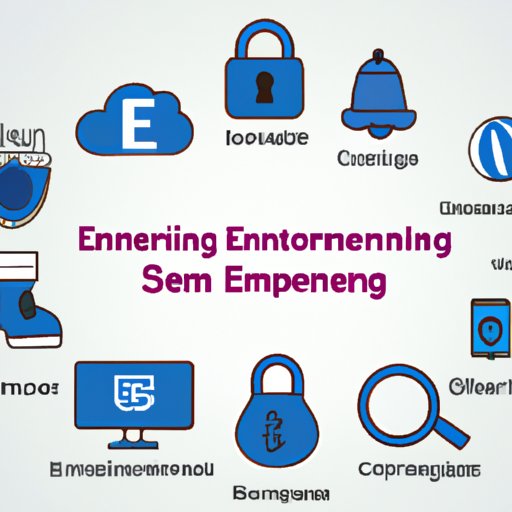Introduction
E-commerce, or electronic commerce, is the buying and selling of goods and services over the internet. It has become an increasingly popular way for consumers to purchase items, as well as for businesses to reach a wider customer base. In this article, we will explore the history, benefits, challenges, and trends of e-commerce.
Explaining What E-commerce Is
E-commerce is not a new concept; it has been around since the early days of the internet in the 1990s. It has evolved over time to include different types of transactions, from buying and selling physical goods to digital products such as music and software. Additionally, e-commerce can take place between businesses and consumers, or between two businesses.
The primary benefit of e-commerce is that it allows businesses to reach customers without having to invest in physical stores and shops. This saves businesses money on overhead costs and makes it easier for them to expand their customer base. Additionally, e-commerce offers customers the convenience of being able to shop from anywhere at any time.
However, there are some challenges associated with e-commerce. One of the biggest concerns is security, as there are risks of data being stolen or misused. Additionally, there are technical challenges associated with setting up an e-commerce platform, as well as regulatory concerns related to taxes and other laws.
Investigating the History of E-commerce
The earliest form of e-commerce was the Electronic Data Interchange (EDI), which was developed in the 1970s. EDI allowed businesses to transfer data electronically instead of using paper-based methods. In 1979, Michael Aldrich created the first online shopping system, which allowed customers to order groceries over the telephone and have them delivered to their homes.
In 1994, Jeff Bezos launched Amazon, which would become one of the largest e-commerce companies in the world. The launch of Amazon marked the start of a new era of e-commerce, as more and more businesses began to offer their products and services online. Today, e-commerce is a multi-trillion dollar industry and it is still growing.
Comparing Traditional Commerce to E-commerce
Traditional commerce involves selling products and services in physical stores, while e-commerce involves selling products and services online. There are advantages and disadvantages to both forms of commerce. Traditional commerce allows customers to see and touch the products they are buying, but it is limited to local customers. E-commerce, on the other hand, allows businesses to reach a global customer base, but customers cannot physically inspect the products before purchasing them.
According to a survey conducted by the National Retail Federation, 67% of shoppers prefer to shop online for convenience, while 33% prefer to shop in stores for the experience. This shows that both traditional and e-commerce have their advantages and can be used to reach different types of customers.
Outlining the Technologies Used in E-commerce
E-commerce requires the use of certain technologies in order to function properly. These technologies include payment processing technologies, such as credit cards and PayPal, shopping cart technologies, and content management systems. Payment processing technologies allow customers to securely pay for their purchases, while shopping cart technologies allow customers to add items to their virtual shopping carts. Content management systems are used to create and manage websites.
Additionally, e-commerce businesses need to use secure servers to protect customer data and prevent fraud. E-commerce businesses must also ensure that their websites are optimized for mobile devices, as more and more people are using their phones to shop online.
Identifying Trends in E-commerce
E-commerce is constantly evolving, and new trends are emerging all the time. Mobile commerce, or m-commerce, is becoming increasingly popular as more people use their phones to shop online. Social media commerce is also gaining traction, as businesses use social media platforms such as Facebook and Instagram to reach customers.
Voice-based commerce is another trend that is gaining momentum. This technology allows customers to use voice commands to search for products and make purchases. This technology is convenient for customers and could potentially revolutionize the way people shop online.
Conclusion
E-commerce is a rapidly growing industry that has changed the way people shop. It offers businesses the opportunity to reach a global customer base without having to invest in physical stores, and it offers customers the convenience of being able to shop from anywhere at any time. However, there are some challenges associated with e-commerce, such as security issues, technical challenges, and regulatory concerns. Additionally, there are several technologies and trends that are shaping the future of e-commerce.
Overall, e-commerce is an exciting and rapidly evolving field that offers great opportunities for businesses and customers alike. As long as businesses are aware of the potential risks and challenges associated with e-commerce, they can reap the rewards of this lucrative industry.
(Note: Is this article not meeting your expectations? Do you have knowledge or insights to share? Unlock new opportunities and expand your reach by joining our authors team. Click Registration to join us and share your expertise with our readers.)
